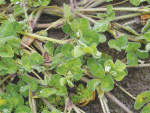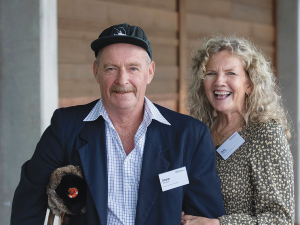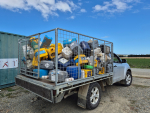Southland sheep and beef farmer Andrew Morrison steps into the Beef + Lamb NZ chairmanship as the levy-funded organisation implements a revised strategy.
Released last year, this strategy puts more emphasis on enhancing farmers’ environmental position, unlocking market potential and greater government and public insight engagement, while still supporting farming excellence.
“The strong meat prices and recent trade gains are positive, but we need to continue to work hard for our farmers,” says Morrison.
“One of the most important elements of the new strategy and recent structural changes is the focus on developing insights. BLNZ is now constantly looking ahead and undertaking research and developing thinking to position the sector for future challenges and opportunities.”
Morrison takes the chair after four years on the board representing the southern South Island region.
With his wife Lisa, he farms 1030ha of breeding and finishing units spread between Southland and Otago. He actively farms their 150ha home farm near Gore, though Lisa is in charge of the day-to-day management. They have two children: Bryn (19) and Kelly (15).
Morrison takes up the reins after the former chairman James Parsons stepped down at BLNZ’s annual meeting on March 22. Parsons was chairman for four years and a director representing the northern North Island region for nine years.
Morrison acknowledged the contribution Parsons made to both BLNZ and the wider red meat industry during his tenure.
“James provided leadership during some challenging times in the industry, especially with climatic events, biosecurity breaches and farming’s environment footprint being called into question,” says Morrison.
“I am a huge supporter of the BLNZ strategy and committed to delivering on it.
“Alongside continuing our investment in extension programmes and ongoing research and development to support farmers, our key priorities are the launch of the environment strategy and Red Meat Story.
“The environment strategy and the Red Meat Story are critical to setting up the sector for a strong future. If we get these right, we will go a long way to achieving our ultimate goal of profitable farmers and thriving rural communities, valued by all New Zealanders.”
Morrison says the Alternative Proteins report is an example of the kind of substantive work BLNZ wants to produce more consistently and there is further work in the pipeline, particularly on the environment.
“The red meat sector is in a strong position with an unprecedented global demand for protein. We need to leverage our competitive advantage of producing natural grass-fed hormone and antibiotic free sheep and beef.”
Morrison says he is looking forward to meeting with key partners in government and in the agricultural sector.
“The red meat sector is stronger if we are able to work with others so effective collaboration is vital.”
Morrison also sits on the boards of Ballance Agri-Nutrients, Ovis Management Ltd, NZ Meat Board and the Pastoral Greenhouse Gas Research Consortium.



















